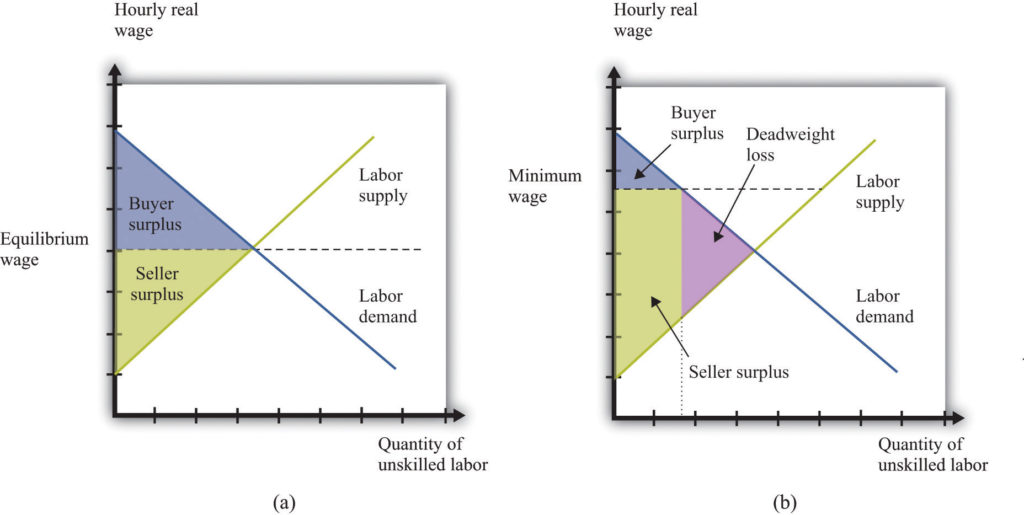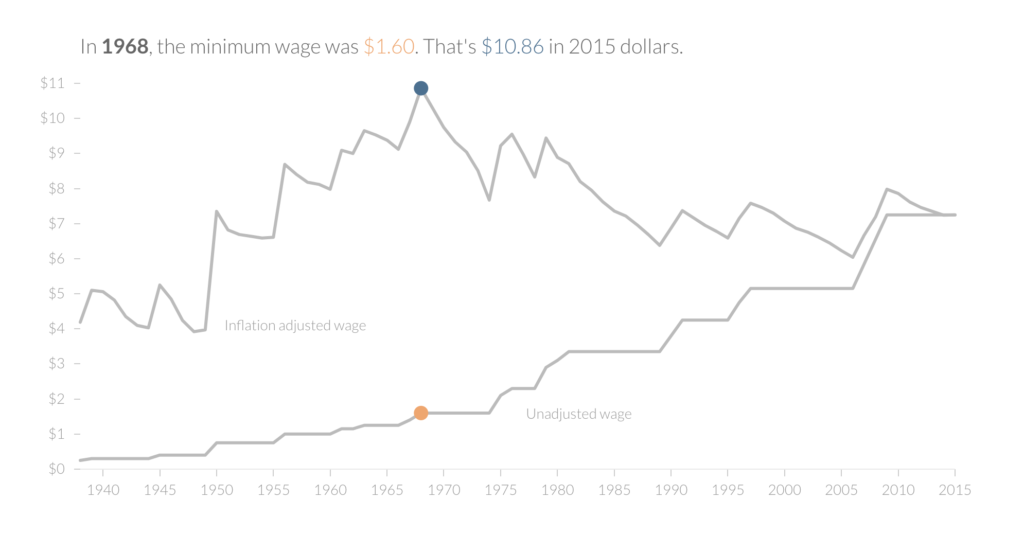When Stacey Li heard that her hourly wage would be increased from $10.5 to $15 from her manager, she couldn’t help texting the exciting news to her friends immediately. Walking out of the manager’s office, she rushed to and hugged her friends who were waiting out of the building she worked.
“I was really excited. At first, I thought I got it because I worked hard,” Lee said. “ But I was still very happy after I knew L.A. increased its new minimum wage.”
 Stacey Li
Stacey Li
Li, a student worker at USC FMS, received her first increased payroll in August. She said she had more extra money to buy clothes and bags. When asked her opinion of increasing minimum wages, she said: “It’s definitely good to minimum-wage earners, such as me. ” However, is it really good to artificially set an increased mandated minimum wage? Maybe not.
On July 1, the City of Los Angeles increased its minimum wage to $13.25 for large employers who have more than 25 employees, up from $12. Smaller employers with 25 and fewer employees saw a $1.5 increase to $12.
Wages will continue to rise incrementally over the next several years. By 2022, the minimum wage of Los Angeles will be heading toward $15 an hour. California is also heading towards $15, but won’t be there until 2023.
Source: wagesla.lacity.org
In passing the bill of higher wages, the well-intended government hoped that mandated higher wages could help the lowest-paid who are really struggling. However, the effects of increasing minimum wages are still under discussion. Two-side voices to debate about the wage floor have been appearing for decades years.
Early in the 1960s, the economist Milton Friedman pointed that the mandated minimum wage is “a monument to the power of superficial thinking”. He thought the low-paid and the unskilled would be hurt because the mandated minimum-wage law induced employers to dismiss a portion of employees.
Also, if you learned Introduction to Microeconomics, you would be familiar with a concept: price equilibrium, a center point where supply and demand are lines that cross at the same time. In a totally competitive market, the price equilibrium point is the wage where the number of workers matches the number of jobs at that price. When we artificially set a mandated minimum wage higher than the market-determined spot, the deadweight loss appears. Under the situation, some workers are out of work. All in all, minimum wages create unemployment: While they draw more people into the labor market, they reduce the number of labor companies wish to hire.
 Source: The Effects of Minimum Wage
Source: The Effects of Minimum Wage
The Employment Policies Institute published a study in December 2017 about the statistically negative effects of California minimum wage increases on employment growth-particularly in low-wage industries, from 1990 to the present. The study shows that a 10% increase in the minimum wage would lead to a 4.5% reduction in employment in an industry if one-half of its workers earn low-wages. The study also estimates 400,000 jobs will be lost if California minimum wage is increased to $15 in 2022.
How does the higher minimum wage hurt the low-paid and the unskilled? For example, the wage increase of $1.5 an hour in Los Angeles will translate to almost $60,000 in annual costs for a business with 20 minimum-wage employees. Businesses need to find ways to increase sales and generate profits to make up for the costs. When businesses cannot pay the costs with increased sales, they will choose other ways to control costs, for example, eliminate jobs, reduce work hours, or hire higher-skilled employees whose productivity can match their salaries.
For example, one of the recent breaking news would be that Amazon’s decision to raise its minimum wage to $15 apply to more than 250,000 Amazon employees and 100,000 seasonal workers, according to the company. However, in order to control the costs, Amazon also decided to end grants of valuable Amazon shares and monthly attendance and productivity bonuses. Some Amazon employees think their yearly total compensation, on the contrary, will shrink and they may end up making thousands of dollars less a year.
However, the other voice says mandated minimum wages don’t necessarily result in job losses; instead, they have little or no effects on employment. In 2017, two universities studied the effects of Seattle minimum wages and came to two different conclusions. The University of Washinton concluded that Seatle’s minimum wage is costing jobs, while the Univerisity of California, Berkeley pointed it hasn’t cut jobs. The University of California, Berkeley’s study focused on the Seattle food services industry, which is an intense user of minimum wage workers. They found no evidence of job loss in the city’s restaurant industry.
In 2013, Center for Economic and Policy Research released a report “Why Does the Minimum Wage Have No Discernible Effect on Employment?” studied by John Schmitt. The study’s conclusion is that little or no employment effects respond to modest increases in the minimum wage. But this doesn’t mean there is no deadweight loss in setting a mandated minimum wage. The study shows that businesses can make use of adjustments to decrease the effect in employment. These possible adjustments include “higher prices to consumers, reductions in non-wage benefits such as health insurance and retirement plans, reductions in training, and shifts in the composition of employment, improvements in business’s proficiency, cutting the earnings of higher-wage workers, and accepting reduction in profits”. In other words, if consumers, higher-paid employees, and businesses can help to pay the extra costs, the low-paid employment won’t be affected. But why do they have to help to pay?
When we discuss the effects of increasing minimum wages, we don’t only talk about the effects on employment but also on consumers, employees and employers. Based on John Schmitt’s report and Amazon’s actions to increase minimum wages, it’s hard to conclude that a wage hike is a really good thing. True, it can benefit a small portion of low-income employees. However, it a large group of people will suffer losses.
Before the first minimum wage came out, economists had predicted the negative effects of setting mandated minimum wages. Now that the governments already knew the possible consequences, why do they still persist the minimum wages?
One of the possible reasons is inflation. According to the interactive graphic, the buying power of minimum wage peaked in 1968, reaching almost $11, although the absolute minimum wage has been increasing over the past decades. If the governments don’t push the increase in minimum wage, the buying power may go down after taking inflation rate into account.
Source: CNN—Minimum Wage since 1938
Also, instead of considering the long-term suffering consequences brought by the minimum wage, the government may focus more on short-term benefits it can bring to low-income workers: from going hungry to having food. For governments, increasing the minimum wage is an easy way to gain support from people because the action shows their humanitarian. Possibly, when economists consider economic and social progress as a whole, the government pay more attention to the interests of certain groups and individuals only care about themselves. Thus, increasing the minimum wage becomes a correct action.


Leave a Reply
You must be logged in to post a comment.